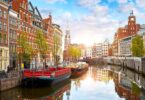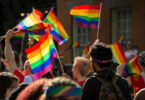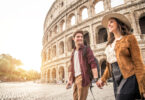Tucked away on the Pacific coast of Central America, El Salvador is a convergence of natural grandeur and human achievements. This diminutive nation, roughly the size of Massachusetts, is Central America’s smallest yet bursts with history and character.
El Salvador’s mixture of awe-inspiring landscapes—volcanic terrains, tranquil lakes, and powerful Pacific tides—complements its historical influences ranging from ancient Mayan remnants to Spanish colonial architecture. El Salvador is a testament to the synergy between its landscapes and its inhabitants, where nature’s untamed spirit exists alongside human creativity and perseverance.
Venture into El Salvador with us.
Surfing Spots
El Salvador’s Pacific shores have long been a beacon for surf aficionados. Historically, these coasts were a bustling nexus for indigenous trade, later evolving into strategic defense points during Spanish incursions.
El Sunzal beach is celebrated for its reliable and gentle waves, ideal for surfers of all levels. El Zonte beckons with its rugged coastlines, hinting at stories from ancient local legends to elusive pirates taking shelter. Las Flores, shielded by tropical greenery, evokes images of untouched paradise.
Mayan Ruins
Preserved amid lush green settings, the relics of the Mayan empire bear witness to an advanced society that prospered from 2000 BCE to 250 CE. Tazumal, set in Chalchuapa, stands out with its immense pyramids and courtyards. The tallest structure rises about 23 meters, boasting intricately chiseled pillars that serve both as historical records and art forms. Innovations like ball courts and elaborate drainage hint at the advanced architectural skill of the Mayans.
Joya de Cerén, dubbed the “Pompeii of the Americas,” preserved under volcanic ash layers, gives us a picture of daily Mayan life. San Andrés offers vast courtyards encircled by remnants of once grand pyramids and palaces. Archaeological finds here, from pottery to tools, highlight the area’s role in ancient trade. Distinctive elements like the indigo dyeing zones and ceremonial spaces capture its multifaceted significance in the Mayan daily life and its view of the universe.
Colonial Towns
Suchitoto is a testament to Spanish colonial design, transporting visitors back to the 16th century. Vibrant activities of the past, from missionary orations to bustling marketplaces, resonate through its town square, illuminating El Salvador’s path to sovereignty. Contemporary art spaces, ensconced in age-old buildings, bring the eras together. The Santa Lucía Church, with its immaculate façade, is a testament to faith and tradition across time.
Similarly, Panchimalco embodies a blend of indigenous roots and colonial influences. Nestled near the Quezaltepeque volcano, the town’s rich heritage shines through in spirited festivals and native artistry. San Sebastián Church, among the country’s most ancient, showcases the marriage of native and colonial design.
The Caldera Lakes
Caldera lakes form when explosive volcanic episodes collapse in on themselves, creating a bowl-shaped depression. El Salvador’s Lake Coatepeque originates from volcanic turmoil about 70,000 years ago. Over time, this lake transitioned from a sacred site to a life source and, today, a serene escape.
Nearby, Lake Ilopango’s origins trace back to a formidable eruption 1,500 years ago, a force that was felt even continents away. Presently, its gleaming waters, enclosed by sharp volcanic edges, are a haven for aquatic adventures.
Scenic Routes
El Salvador’s provides a diverse range of potential road trips, inviting visitors to delve into the country’s amalgamation of history, culture, and pristine nature. The Ruta de las Flores presents the nation’s cultural spectrum, where towns like Ataco and Juayúa stand as custodians of history amid nature’s bounty. In contrast, La Ruta de la Paz recounts tales of El Salvador’s wartime past. Nature lovers will cherish Ruta de Los Naranjos, meandering through misty forests and volcanic vistas. For unparalleled views, La Ruta de las 14 Ventanas unfurls vistas spanning lush valleys to towering volcanoes.
You Might Also Enjoy: ¡Bienvenidos, Amigos! 8 Awesome Reasons Why You Should Visit Mexico
Volcanoes
Within the Pacific Ring of Fire, El Salvador’s volcanic activity stands tall. Santa Ana, or Ilamatepec, ranks as the nation’s tallest volcano. The history of this formation is marked by tales of formidable eruptions, influencing folklore, migratory trends, and settlement choices.
Often dubbed the “Lighthouse of the Pacific,” Izalco gained fame for its persistent eruptions from 1770 to the mid-20th century. Its fiery displays, visible from afar, became seafarers’ guiding stars. The San Salvador Volcano, or Quetzaltepec, has left an indelible mark on the country, with monumental eruptions impacting the city of San Salvador. A 1917 eruption birthed a crater lake, a significant landmark. Over the eons, the domineering silhouette of Quetzaltepec has influenced urban planning, indigenous customs, and trade pathways, owing to its proximity to ancient trade hubs.
FAQs:
Q: When’s the optimal time for surfing in El Salvador?
A: Peak surfing in El Salvador spans March to October, aligning with the rainy season, providing the most consistent swells between May and July. Those preferring smaller crowds can still find decent waves during the relative dry spell from November to February.
Q: How accessible are the Mayan ruins?
A: Major Mayan sites, including Tazumal, Joya de Cerén, and San Andrés, offer easy accessibility to the ruins, some of which have well-kept amenities. Often, these sites also feature enlightening museums and are strategically located near major routes and settlements for hassle-free day excursions.
Q: What’s the safety status for El Salvador tourists?
A: While El Salvador has navigated security challenges over the years, typical tourist destinations—beaches, ruins, national parks—remain largely safe. Travelers should exercise usual caution: keep valuables discreet, avoid nocturnal travel, and sidestep potentially risky regions sans a guide.
Q: Can I explore the volcanoes on my own?
A: Certain volcanoes, like San Salvador and Izalco, feature marked pathways for individual treks. Yet, for comprehensive experiences and safety, guided excursions are available, particularly for lesser-known or complex terrains.
Q: Any must-try Salvadoran dishes?
A: Visitors should make it a point to savor the iconic pupusa, a filled tortilla treat, commonly packed with cheese, beans, or meat. Also a delight are the pastelitos, savory pastries brimming with meat or veggies. For a sweet indulgence, try the yucca drizzled with honey.
Q: Is public transport reliable for exploring scenic routes?
A: While public transport connects pivotal cities and towns, the routes may not connect to all sightseeing spots, especially secluded ones. To ensure ease and adaptability, consider car rentals or a hiring a local guide with transport.
Q: Which languages are the most common in El Salvador?
A: Spanish is the dominant language. English is generally spoken and understood in tourist-centric zones. In specific pockets, indigenous dialects still dominate.
Did we leave out your favorite part of El Salvador? Tell us about it in the comments below!














